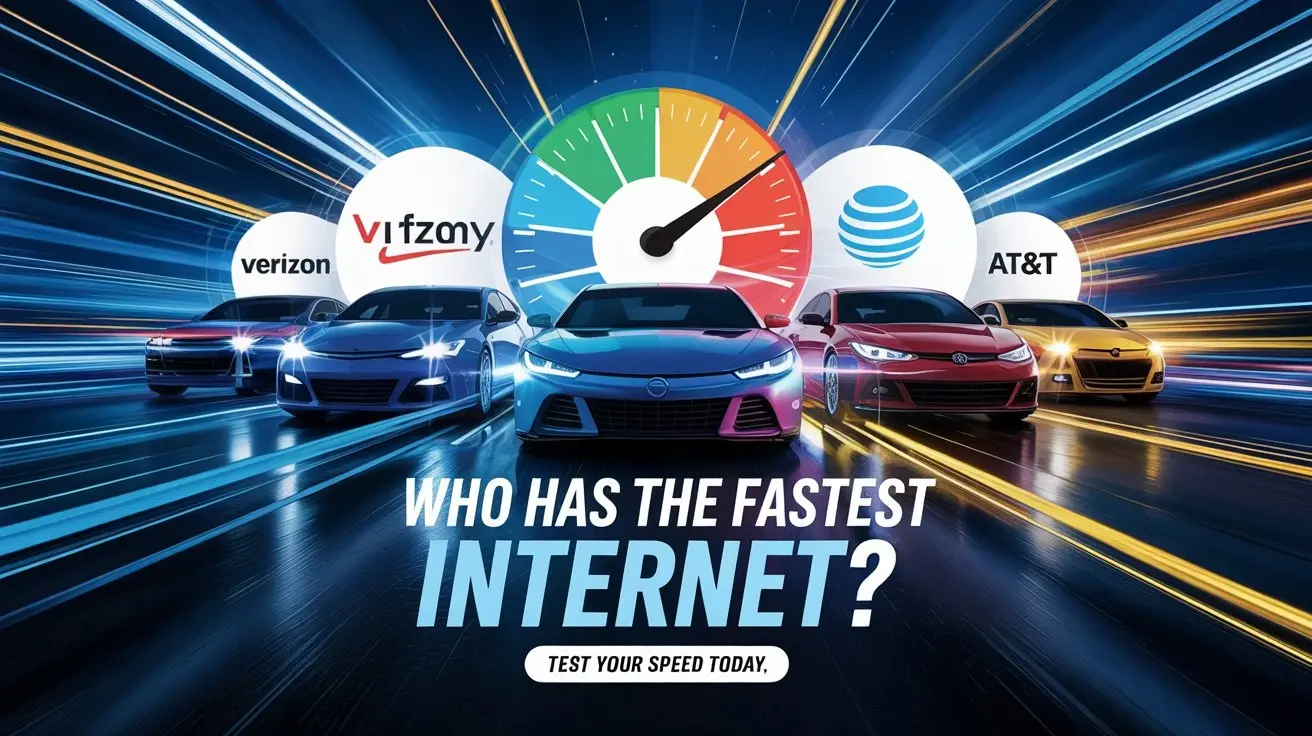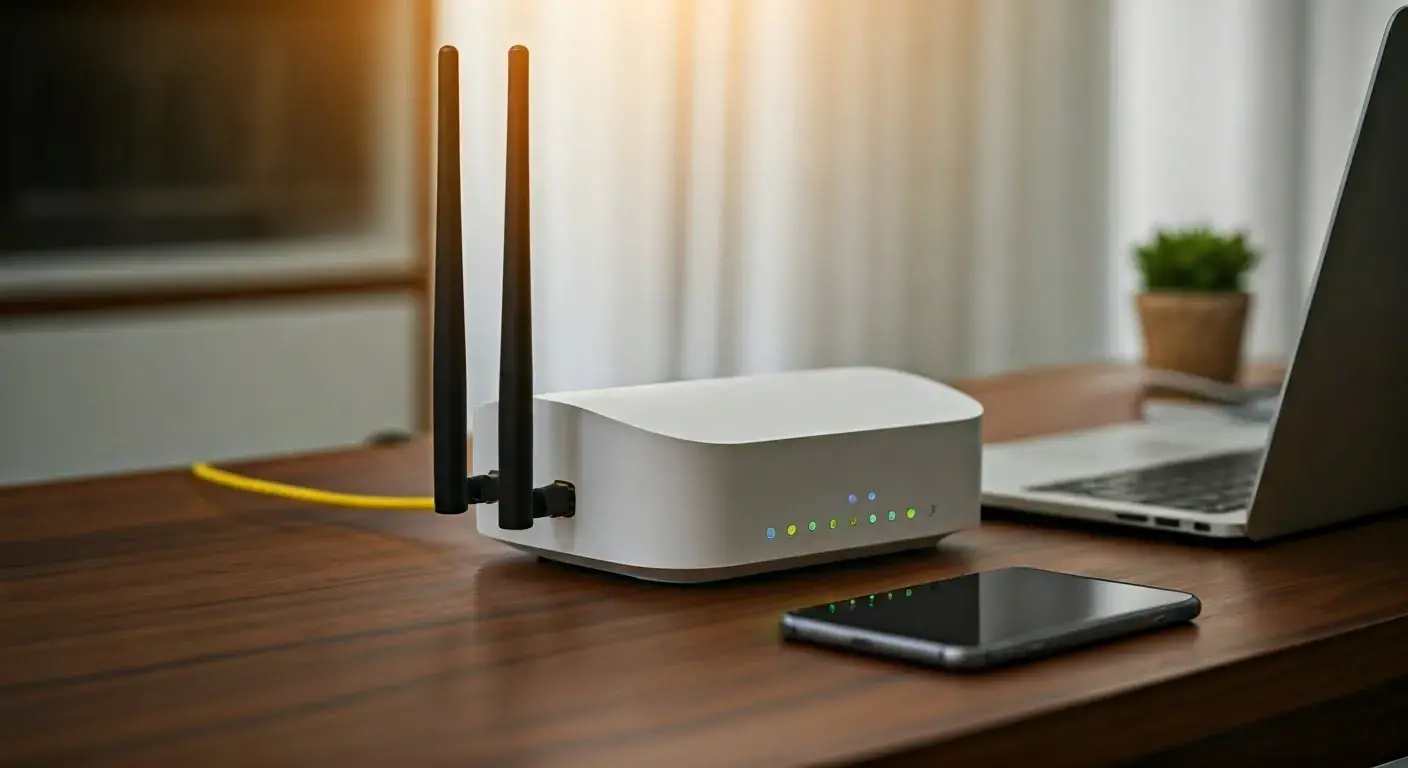How can I check if I have fiber in my area?

Introduction: Unlocking the Speed of Fiber
Are you tired of sluggish internet speeds and constant buffering? The quest for faster, more reliable connectivity often leads to one question: "How can I check if I have fiber in my area?" This guide will empower you with the knowledge and tools to determine fiber optic internet availability at your specific address, ensuring you can unlock the full potential of the digital world.
Why Fiber Optic Internet is a Game-Changer
Before diving into how to check for availability, it's crucial to understand what makes fiber optic internet so revolutionary. Unlike traditional copper-based cable or DSL, fiber optic cables transmit data using light signals through thin strands of glass or plastic. This fundamental difference translates into several significant advantages that are transforming how we connect.
Unparalleled Speed
Fiber optic internet offers symmetrical download and upload speeds that are orders of magnitude faster than conventional methods. While many DSL connections struggle to reach 50 Mbps, and cable can offer hundreds of Mbps for downloads, fiber can easily deliver 1 Gbps (1000 Mbps) and even 10 Gbps to homes. This means downloads that used to take hours can be completed in seconds, and uploading large files or participating in high-definition video calls becomes seamless. In 2025, the average advertised fiber speed for residential customers in areas with availability often starts at 300 Mbps symmetrical and extends to 1 Gbps or higher.
Exceptional Reliability
Fiber optic cables are less susceptible to electromagnetic interference, temperature fluctuations, and water damage compared to copper wires. This means a more stable and consistent connection, with fewer outages and less degradation of signal quality over distance. For businesses and households relying on a constant connection for remote work, online learning, or streaming, this reliability is invaluable.
Lower Latency
Latency, or the delay in data transfer, is significantly reduced with fiber optics. This is critical for applications like online gaming, real-time video conferencing, and virtual reality, where even small delays can impact performance. Lower latency translates to a more responsive and immersive online experience.
Future-Proofing Your Connection
As internet usage continues to grow and demand for bandwidth increases with emerging technologies like 8K streaming, advanced smart home devices, and the metaverse, fiber optic infrastructure is inherently designed to handle these future demands. Investing in fiber now means you're setting yourself up for years of high-performance connectivity.
How to Check if You Have Fiber in Your Area: A Step-by-Step Guide
Determining fiber availability at your specific location involves a multi-pronged approach. While there's no single magic button, combining a few methods will give you the most accurate picture. Here’s a comprehensive guide to help you navigate the process.
Step 1: Identify Major Internet Service Providers (ISPs) in Your Region
The first step is to understand which ISPs operate in your general geographic area. Major national providers like AT&T, Verizon, Spectrum (Charter), Xfinity (Comcast), CenturyLink, and Google Fiber are key players. However, depending on your location, smaller regional or municipal providers might also offer fiber services.
To identify these providers:
- Ask Neighbors: The most straightforward method is to ask your neighbors what internet service they use and if they have fiber.
- Online Search: Perform a Google search for "internet providers [your city/town]" or "fiber internet [your zip code]".
- Local Government Websites: Sometimes, local government or municipal broadband initiatives will list participating providers.
Step 2: Visit Internet Provider Websites
Once you have a list of potential providers, the most direct way to check for fiber availability is to visit their official websites. Most ISPs have an online tool where you can enter your address to see what services are available.
How to Use Provider Tools Effectively:
Navigate to the "Internet," "Services," or "Check Availability" section of each provider's website. You will typically be prompted to enter your street address, city, state, and zip code.
What to Look For:
- Fiber Plans Explicitly Listed: If fiber is available, you'll likely see plans advertised with speeds of 300 Mbps, 500 Mbps, 1 Gbps, or even higher, often with symmetrical upload/download speeds mentioned.
- DSL or Cable as Only Options: If the website only shows DSL or Cable/Coaxial internet plans, it's a strong indication that fiber is not yet available at your address from that particular provider.
- "Coming Soon" Notifications: Some providers might indicate that fiber is planned for your area in the future. This is valuable information for future planning.
Example: Let's say you live in Austin, Texas. You would visit the websites for providers known to operate there, such as AT&T Fiber, Google Fiber, and Spectrum. On AT&T's site, you'd enter your address. If fiber is available, you'll see their Fiber 1000 Mbps plan. If only their DSL or U-verse plans appear, fiber isn't at your doorstep from AT&T.
Step 3: Utilize Third-Party Availability Checkers
Several independent websites aggregate broadband availability data from various providers. These tools can be incredibly efficient, allowing you to check multiple ISPs at once.
Popular Third-Party Tools (as of 2025):
- BroadbandNow.com: This is one of the most comprehensive resources, allowing you to enter your zip code or address and see a list of providers, their available technologies (fiber, cable, DSL, satellite), and speeds.
- HighSpeedInternet.com: Similar to BroadbandNow, this site offers an availability checker and comparisons of different internet plans.
- FCC National Broadband Map: The Federal Communications Commission (FCC) provides a national map that shows broadband availability. While it can sometimes be less granular than commercial tools, it's an official source and is continually updated. You can access it at broadbandmap.fcc.gov.
How to Use Them:
Simply navigate to one of these sites, enter your address or zip code, and the tool will present you with a list of available internet technologies and providers in your area. Pay close attention to the "Technology" column to identify fiber.
Important Note: While these tools are excellent, always cross-reference the information with the provider's official website for the most up-to-date and precise availability for your specific address. Sometimes, a provider may have fiber on your street but not yet to your exact house number, which a third-party tool might not always capture perfectly.
Step 4: Directly Contact Internet Service Providers (ISPs)
If online tools are inconclusive, or if you want to confirm details or inquire about future plans, direct contact is your next best step.
Methods of Direct Contact:
- Phone: Call the customer service or sales department of the ISPs you identified. Be prepared to provide your full address. Ask specifically about "fiber optic internet" availability.
- In-Person (if applicable): Some providers have local offices or sales representatives who can provide information. This is more common for smaller, regional providers.
- Online Chat/Support: Many ISP websites offer live chat support. This can be a quick way to get an answer without a long phone call.
What to Ask:
- "Is fiber optic internet available at [your full address]?"
- "If not, is there a plan for fiber installation in my neighborhood in the near future? Can I be added to a notification list?"
- "What are the exact speeds (download and upload) for your fiber plans?"
- "Are there any installation fees or equipment rental costs associated with the fiber service?"
Understanding Factors Influencing Fiber Availability
Fiber optic deployment isn't uniform. Several factors dictate where and when this advanced technology becomes available. Understanding these can help you anticipate future possibilities and advocate for expansion.
Infrastructure Deployment Costs
Laying fiber optic cable is a significant undertaking. It often requires digging trenches, installing conduit, and connecting to existing networks. The cost per household served is a major determinant for ISPs.
- Density: Densely populated areas (cities and suburbs) are generally more cost-effective to serve because a single fiber run can connect to many homes. This is why urban areas typically get fiber first.
- Existing Infrastructure: In some cases, ISPs can leverage existing conduit or pole infrastructure, which can reduce deployment costs. However, in many new deployments, entirely new infrastructure must be built.
- Competition: In areas with high competition among ISPs, there's often a greater incentive to invest in cutting-edge technology like fiber to attract and retain customers.
Urban vs. Rural Deployment
The difference in fiber availability between urban and rural areas is stark.
- Urban Areas: As mentioned, higher population density makes fiber deployment economically viable. Major cities and their surrounding suburbs are often the first to receive fiber upgrades. Providers like Google Fiber have historically focused on metropolitan areas.
- Rural Areas: Deploying fiber to sparsely populated rural areas is significantly more expensive per household. This is why rural broadband access, including fiber, often relies on government subsidies, grants, or municipal initiatives. Projects like the Connect America Fund (though evolving) and state-level broadband programs aim to bridge this gap. In 2025, efforts are ongoing to expand rural fiber, but it remains a significant challenge.
New Developments and Infrastructure Projects
Keep an eye on local news and government announcements.
- New Housing Developments: Builders often install fiber optic infrastructure in new construction communities to make them more attractive to buyers. If you're moving into a new home, inquire about the internet infrastructure.
- Municipal Broadband Initiatives: Some cities and towns are investing in their own fiber networks to provide competitive, high-speed internet to residents, especially where private providers have been slow to deploy. Check your local city hall or municipal website for information.
- ISP Expansion Plans: ISPs frequently announce plans to expand their fiber networks into new neighborhoods or towns. Following your local news outlets or ISP press releases can provide early warnings. For instance, in 2025, many providers are announcing multi-year build-out plans to reach underserved suburban and exurban areas.
- Government Funding: Federal and state governments continue to allocate funds to broadband expansion. Tracking these initiatives can give you an idea of which areas are slated for upgrades. For example, the NTIA's Broadband Equity, Access, and Deployment (BEAD) Program is a significant source of funding in the US in 2025, aiming to connect millions of unserved and underserved locations with high-speed internet, including fiber.
What to Do If Fiber Isn't Available Yet
Discovering that fiber optic internet isn't available at your address can be disappointing, but it doesn't mean you're out of options for faster, more reliable internet. There are still ways to improve your connectivity and prepare for future upgrades.
Exploring Alternative High-Speed Internet Options
While fiber is the gold standard, other technologies can provide a good internet experience, especially if you currently have very slow DSL or dial-up.
Comparison of Available Technologies (2025 Data)
| Technology | Typical Download Speeds | Typical Upload Speeds | Reliability | Best For |
|---|---|---|---|---|
| Fiber Optic | 300 Mbps - 10 Gbps+ (Symmetrical) | 300 Mbps - 10 Gbps+ (Symmetrical) | Excellent | Heavy streaming, gaming, large file transfers, remote work, future-proofing |
| Cable Internet | 50 Mbps - 1 Gbps+ (Asymmetrical) | 5 Mbps - 100 Mbps (Asymmetrical) | Good | General browsing, streaming, moderate gaming, remote work |
| DSL (Digital Subscriber Line) | 5 Mbps - 100 Mbps (Asymmetrical) | 1 Mbps - 10 Mbps (Asymmetrical) | Fair to Good (depends on distance from exchange) | Basic browsing, email, light streaming |
| Fixed Wireless | 25 Mbps - 1 Gbps (Can be Symmetrical) | 25 Mbps - 1 Gbps (Can be Symmetrical) | Good (line-of-sight dependent) | Rural areas, alternative to DSL/Satellite |
| Satellite Internet | 12 Mbps - 100 Mbps (Asymmetrical) | 1 Mbps - 3 Mbps (Asymmetrical) | Fair (high latency, weather sensitive) | Remote locations where no other options exist |
| 5G Home Internet | 100 Mbps - 1 Gbps+ (Asymmetrical) | 10 Mbps - 50 Mbps+ (Asymmetrical) | Good to Excellent (coverage dependent) | Urban/suburban areas, alternative to cable/DSL |
Cable Internet Options:
If fiber isn't available, cable internet is often the next best thing. Many cable providers offer speeds comparable to lower-tier fiber plans, especially for downloads. Ensure you're looking at plans with the highest possible download and a decent upload speed if you do a lot of uploading.
Fixed Wireless and 5G Home Internet:
These technologies are rapidly expanding, particularly in suburban and rural areas where traditional wired infrastructure is lacking. Fixed wireless uses antennas to beam internet from a tower to a receiver on your home. 5G Home Internet uses the 5G cellular network. Both can offer significant speed improvements over DSL and satellite. Check providers like T-Mobile Home Internet, Verizon 5G Home Internet, Starlink (for satellite), and local fixed wireless providers.
DSL as a Last Resort:
If your only option is DSL, try to get the fastest plan available. Speeds vary greatly depending on your distance from the telephone company's central office.
Advocating for Fiber Optic Expansion in Your Community
If fiber is not available, you can play a role in bringing it to your neighborhood. Collective action can influence ISP decisions and local government priorities.
- Form a Neighborhood Group: Talk to your neighbors about the desire for better internet. A united front is more powerful than individual requests.
- Contact Your ISP: Have your neighborhood group collectively contact ISPs to express interest. Document the number of interested households.
- Engage Local Government: Reach out to your city council members, mayor's office, or county commissioners. Inquire about any plans for broadband infrastructure development and express your support for fiber expansion. Highlight the economic and educational benefits.
- Support Municipal Broadband: If your community is considering a municipal broadband project, learn about it and lend your support. These projects are often driven by community demand.
- Stay Informed on Funding: Keep track of federal and state grants (like the BEAD program mentioned earlier) that are designed to fund broadband infrastructure. Advocate for your community to be a recipient.
By actively participating, you can help shape the future of internet connectivity in your area and potentially pave the way for fiber optic services.
Conclusion: Your Path to Faster Internet
Checking for fiber optic internet availability in your area is a crucial first step toward upgrading your online experience. By systematically visiting provider websites, utilizing third-party tools like BroadbandNow and the FCC map, and directly contacting ISPs, you can accurately determine if fiber is an option. Understanding the factors influencing deployment, such as infrastructure costs and population density, provides context for availability. If fiber isn't yet a reality for your address, don't despair. Explore robust alternatives like advanced cable tiers, 5G home internet, or fixed wireless, and consider advocating for fiber expansion within your community. Taking these proactive steps will guide you toward a faster, more reliable internet connection, empowering your digital life in 2025 and beyond.





